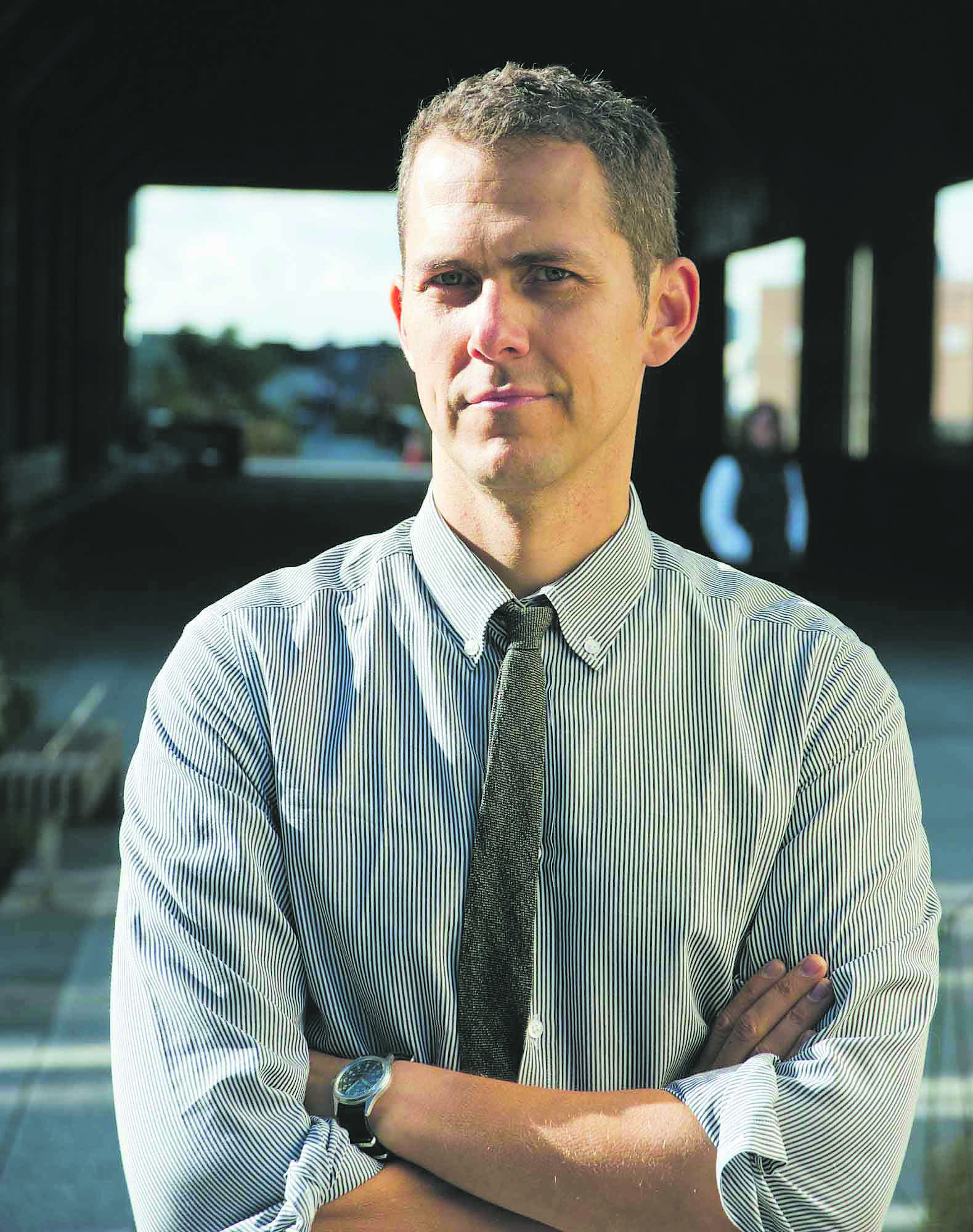Friends of High Line Co-Founder Robert Hammond Talks About Stepping Down
By Billy Gray February 26, 2013 8:00 am
reprintsRobert Hammond announced this month that he will step down as executive director of Friends of the High Line at the end of the year. The self-described entrepreneur will leave the organization that he co-founded in 1999 with Joshua David in enviable shape. The High Line—the elevated park that in 2009 opened to the public on a long-abandoned former West Side freight railway trestle—drew 4.4 million visitors last year.
Friends of the High Line is in the midst of a $125 million capital campaign that will help fund stage three of the project and bring its northern terminus to West 34th Street. Once it officially runs from Gansevoort Street in the Meatpacking District through Chelsea and to the Hudson Yards site, the High Line will serve as a pedestrian artery between three of the city’s most dynamic—and fastest changing—neighborhoods.
Mr. Hammond spoke to The Commercial Observer about the genesis of the project, the surrounding real estate gold rush it has amplified, if not prompted, and the backlash of a vocal minority.
 The Commercial Observer: You presented the idea of the High Line to the local community board 14 years ago. What originally planted the seed for it?
The Commercial Observer: You presented the idea of the High Line to the local community board 14 years ago. What originally planted the seed for it?
Mr. Hammond: I’ve lived in the same apartment in the West Village for 19 years now. And I’d always seen the structure from the street. I found it interesting, but honestly didn’t give it much thought. Then I read an article saying it was going to be torn down. I assumed someone was working to preserve it, since everything in New York has a preservation group attached to it, basically. But this one didn’t.
I heard it was on the agenda of a community board meeting. I’d never been to one, and had never wanted to go. But I went and happened to sit next to Joshua David, who I didn’t know at the time. By the end of the meeting we realized we were really the only two people interested in it. Many people actively wanted to tear it down.
We started talking before we’d ever been up on the structure. [Rail transportation supplier] CSX was at the meeting, and they wound up giving us a tour of the line. Most people think we snuck up there, but the reality isn’t that exciting.
I’d fallen in love with the line from below. It seemed like an industrial version of a Roman aqueduct. But then when we went up there we saw a mile and half of wildflowers, and views of the Hudson River and Statue of Liberty. That’s when I really fell in love with it.
The original goal of Friends of the High Line was to stop it from being demolished, because Mayor Giuliani wanted to tear it down. But from the start, it wasn’t quite the typical preservation where you’re trying to stop something. We also wanted to create something for the public
Did you at any point anticipate just how popular the High Line would become?
No. No, no, no. [Laughs] When we started it, we had no idea. Before it opened, we projected that we’d have about 300,000 visitors per year.
In 1999, the Meatpacking District was in the early stages of what would become lightning-fast gentrification.
It’s funny. Sometimes I think we get too much credit and blame for what’s happened in the neighborhood. The Meatpacking was already sort of a nightclub spot, and the restaurants were coming in. Florent had been there for a long time. It was transitioning from an alternative nightlife space—parties like Jackie 60—to more mainstream.
As the neighborhood transformed and brought in a different profile of New Yorker and tourist, did the High Line plans evolve as well?
No. To me, New York is always about change. But what we wanted the High Line to do was also represent the history of the area. We know it’s always going to change. But this would be a permanent connection to the past. Also, a lot of the changes that were happening—and would have happened with or without the High Line—would have had no public component or benefit. The idea of creating something free and open to and specifically designed for the public was really important to us.
Have the phased extensions gone according to plan? Was the idea from the start to go all the way to 34th Street?
Yeah. And it’s happened much quicker than we ever anticipated.
The High Line will terminate around Hudson Yards, which is being billed as one of the more transformative developments in recent city history. How do you envision that area looking in five years?
I think it’s something most people don’t realize. That’s where a lot of the city is going to grow. And again, one of the things we think of is being able to connect different parts of the city and remind people of the history of the rail yard.
Projects in Atlanta, Queens and elsewhere have tried to mimic the High Line. Do you have a favorite?
They’re all interesting, but it’s less interesting when they’re just trying to copy the High Line. My favorites are the ones that are unique to their own spaces. The Lowline [a proposed underground park on the Lower East Side] is a great example. The name is related, but it’s really almost a technology play of how to use underground spaces.
What’s interesting to me is that Joshua and I didn’t have any background in urban planning. I’m excited to see that people realize they don’t have to have it all figured out when they start these things.


